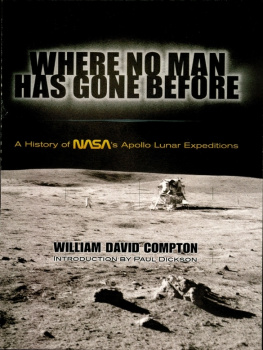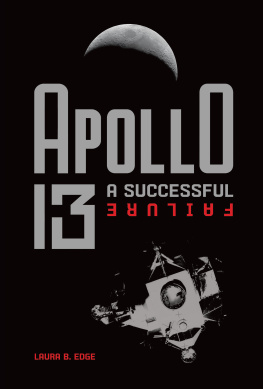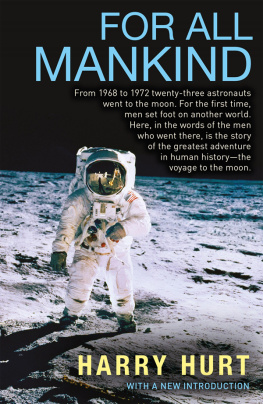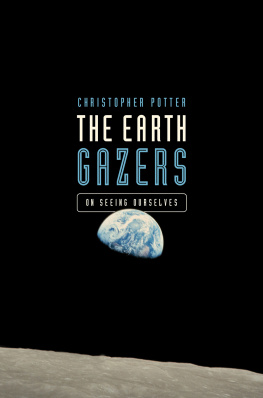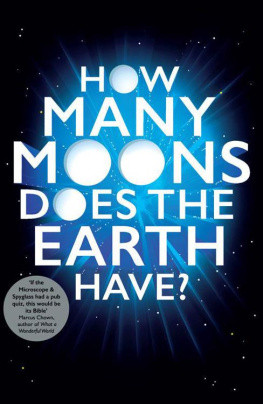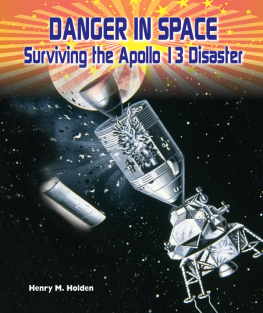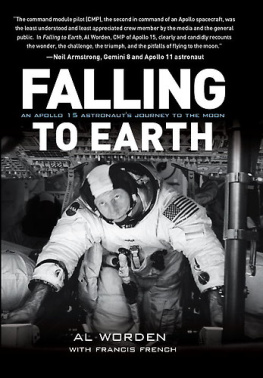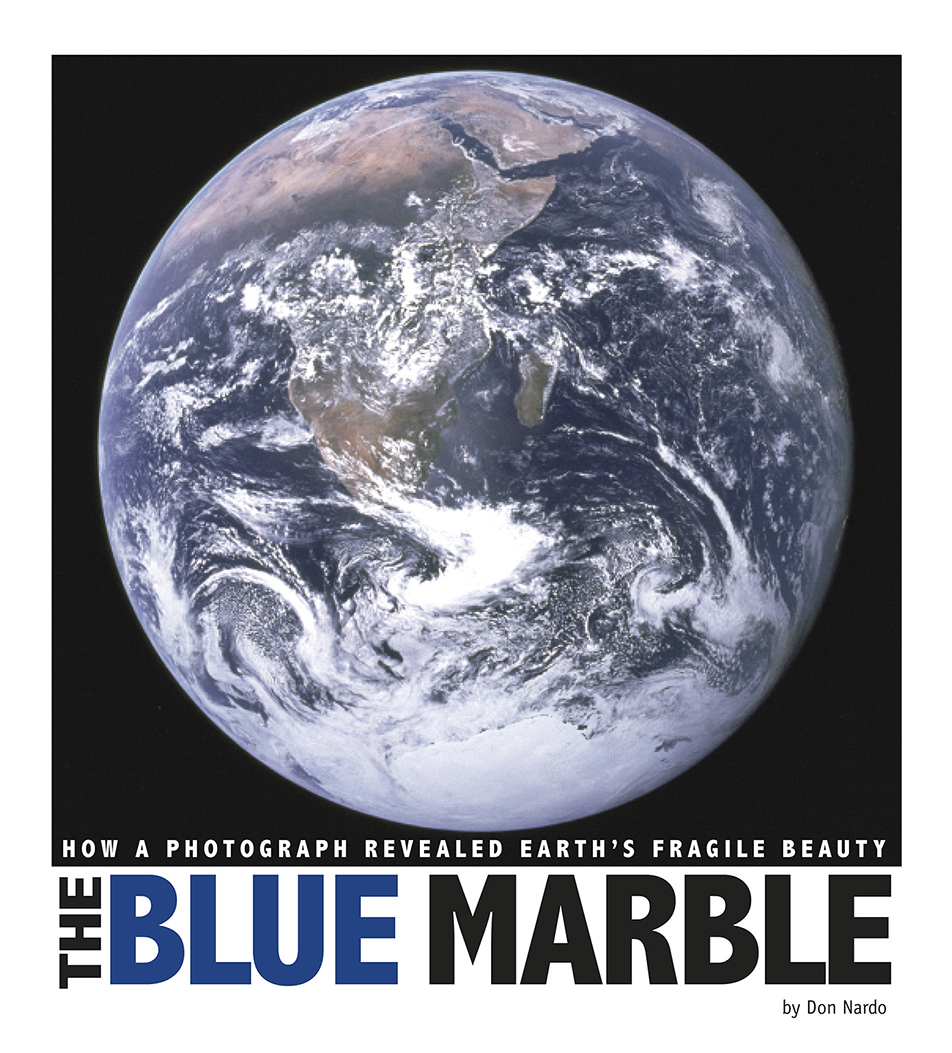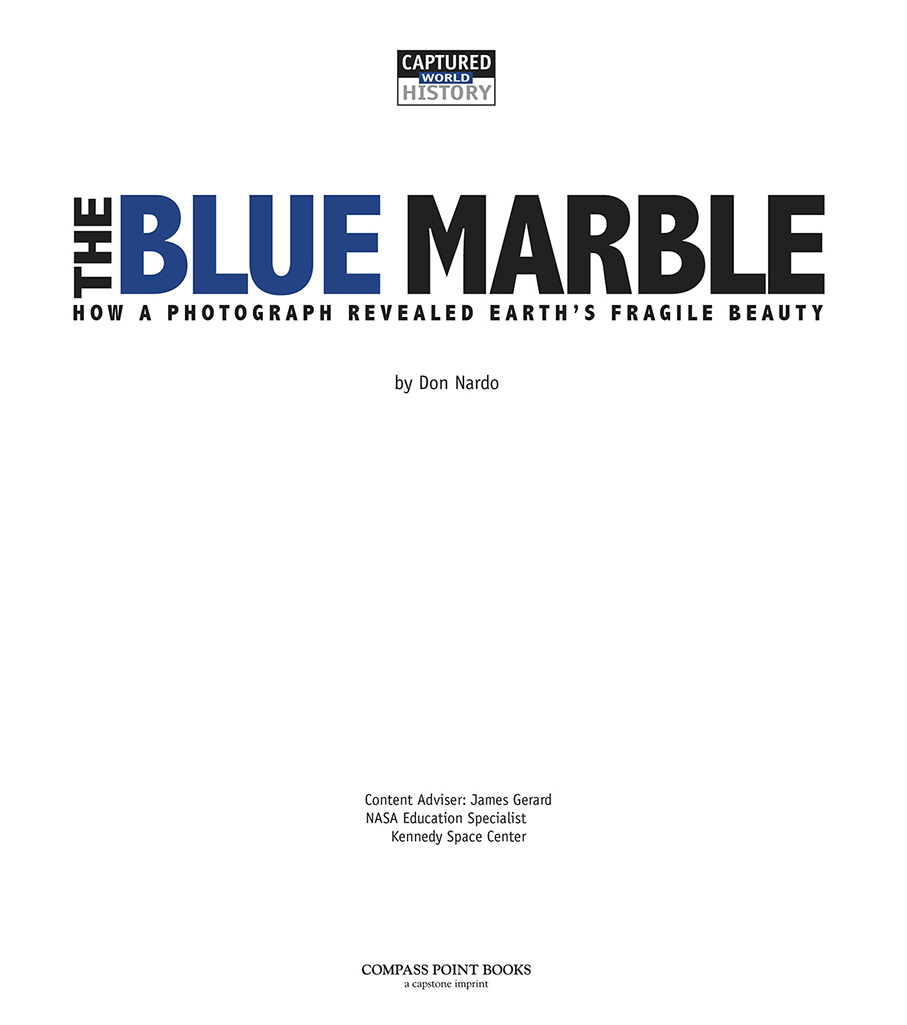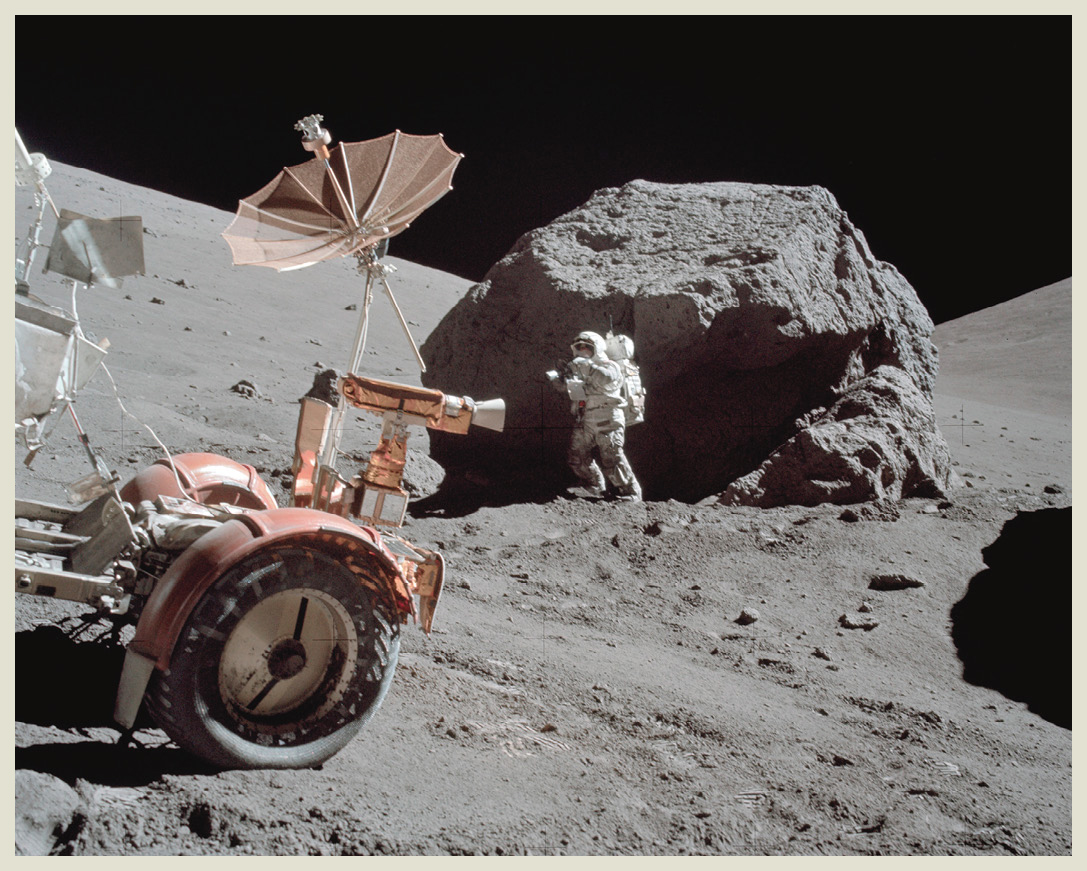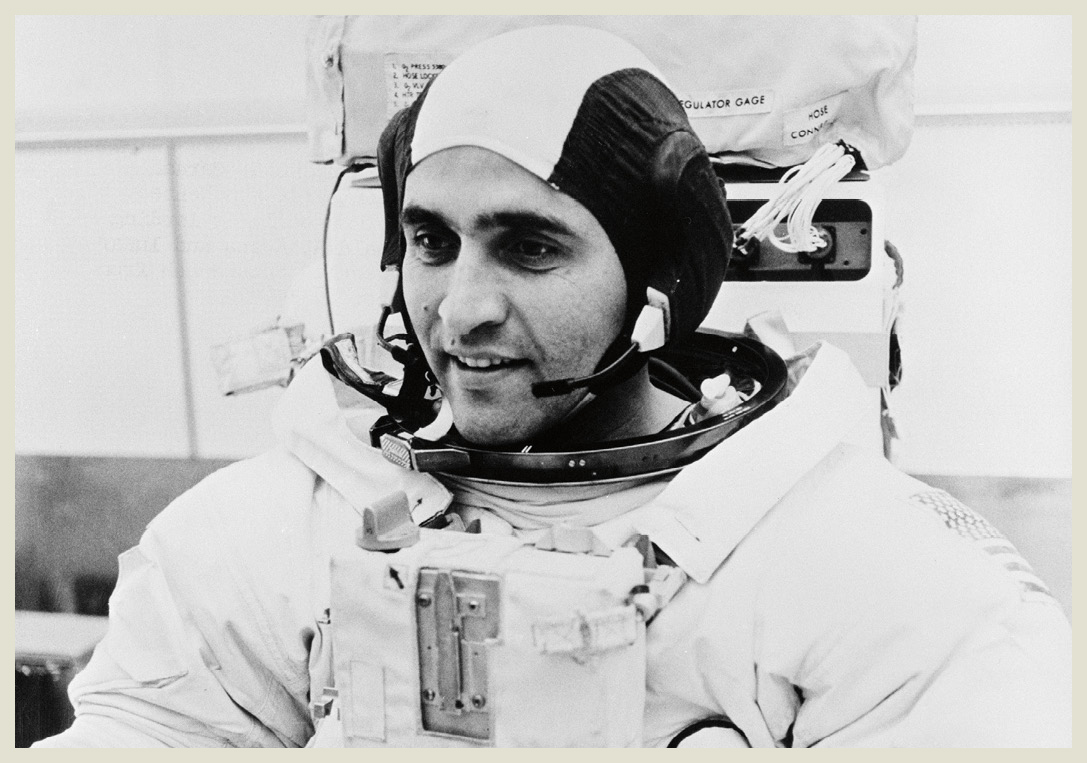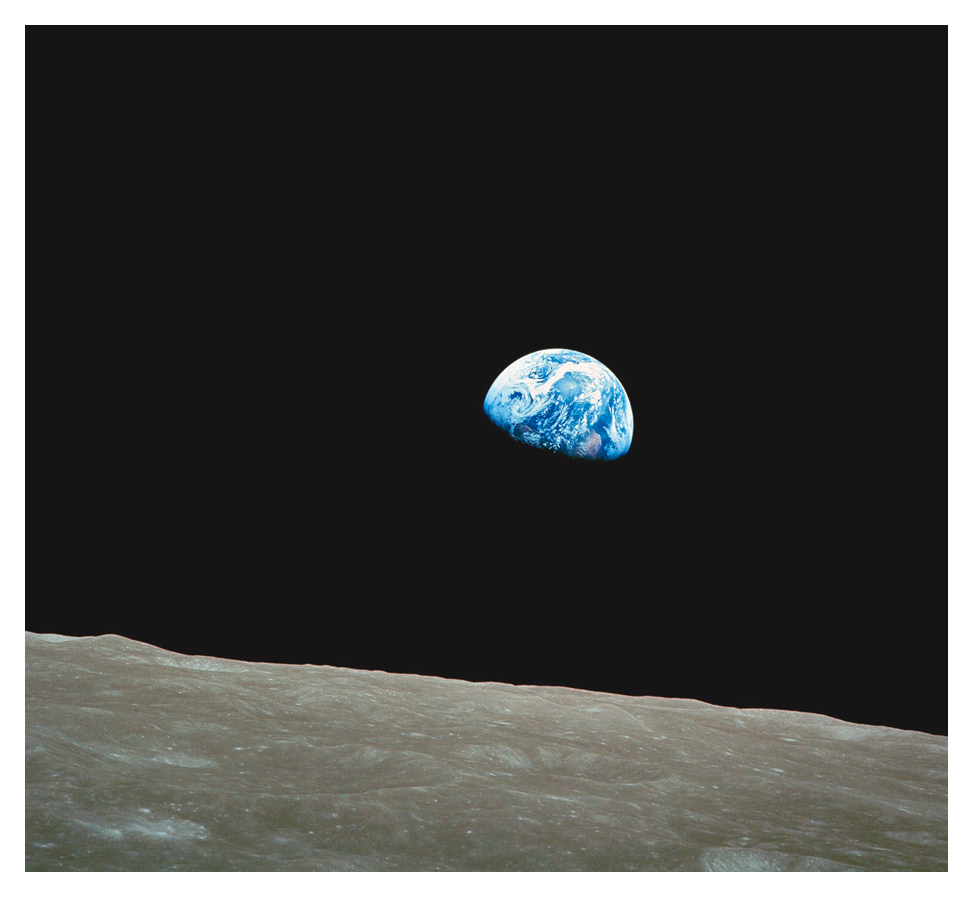Chapter One
A PIECE OF BLUE IN SPACE
Were not the first to discover this, but wed like to confirm that the world is round. These words from Eugene Cernan, commander of the Apollo 17 spacecraft, reached Mission Control on Earth in less than a second. The men and women monitoring the mission that dayDecember 7, 1972smiled at Cernans little joke. Humor was welcome because it helped to break the tension they were naturally feeling at that moment.
The Apollo 17 craft had launched from NASAs John F. Kennedy Space Center on Floridas eastern coast five hours before. Everyone involved was concentrating hard on doing their jobs. Their goal was to place Cernan and another astronaut on the moons surface. There they would travel farther than any of the U.S. astronauts who had walked on the moon. They would do so using NASAs Lunar Roving Vehicle. The LRV, which weighed 460 pounds (209 kilograms), was similar to a golf cart but much more sophisticated. It would allow the astronauts to explore the surface out to a distance of 6 miles (9.7 kilometers) from the landing craft. (The LRV could go farther. But to be on the safe side, mission planners had restricted the trips to 6 miles to conserve the mens oxygen and other elements of life support.)
Eugene Cernan (left) and Ronald Evans under zero gravity conditions aboard Apollo 17
While exploring, the astronauts would collect soil and rock samples. Studying these materials on Earth would help scientists determine the moons physical makeup and age. They might also be able to figure out how the moon had formed.
Harrison Jack Schmitt collects rock and soil samples near a huge boulder.
When NASA was planning the mission, no one foresaw that there would be a huge bonus. Even as he quipped about Earths being round, Cernan was unaware that Apollo 17 would soon produce an iconic photo. This stunning image would show planet Earth as a lonely globe floating in the inky black immenseness of outer space. Nicknamed the Blue Marble, the picture was destined to become a good deal more famous than the mission itself. Within a few years it would achieve the reputation of being one of the most often reproduced and most recognizable photos in history.
Considering the pictures almost legendary status, it is perhaps surprising that it still is not clear which of the three Apollo 17 crewmen took it. Besides the commander, Eugene Cernan, command module pilot Ronald Evans and Harrison Jack Schmitt, the lunar module pilot and mission geologist, were on board.
Schmitt is convinced he shot the famous Blue Marble photo.
Schmitt later said he snapped the shot in question. I treasure the whole mission, he said in a 2012 interview. Every day had more than one really spectacular event. The first day, we saw this nearly full Earth, and I was able to take that picture [the Blue Marble], still the most requested photograph in the NASA archives.
NASA officials who studied the mission data agreed that Schmitt was most likely the photos creator. But they found that all three astronauts had taken images of Earth on their first day in space. And they were not paying strict attention to who was taking which photo. So the officials could not determine the Blue Marbles photographer with certainty. To be fair, therefore, the official credit for the picture went to the entire Apollo 17 crew.
Whoever actually snapped the renowned photo, it was not the first one taken of Earths completely illuminated disk. Cameras mounted on a satellite had already captured such shots. In 1967, two years before U.S. astronauts (on the Apollo 11 mission) first landed on the moon, NASAs ATS-3 communications satellite had taken photos of Earths full disk.
A communications satellite photographed Earth in 1967 with a black and white TV camera. Three photos, each with a red, green, or blue filter, created the color image. The small disk in front is a color match card.
Earlier astronauts had also seen and photographed one side of Earth from space. The Apollo 8 spacecraft had made history December 24, 1968, as the first manned spacecraft to orbit the moon. At one point its crewmen caught sight of Earth appearing to rise above the lunarhorizon.
Later dubbed Earthrise, the photo taken during the Apollo 8 mission became almost as iconic as the Blue Marble. The main difference between the two was the coverage of the planets surface. The Blue Marble, taken from an altitude of about 28,000 miles (45,000 km), showed a full Earth rather than a gibbous Earth. ( Gibbous refers to the phase in which a planet or moon is more than half but not fully illuminated.) The sun was directly behind the Apollo 17 spacecraft. So its occupants were able to create the first image of a fully lit side of Earth from space.
A SUPERB SPECTACLE
Surprisingly, when planning the Apollo 8 mission in 1968, NASA officials did not prepare the astronauts for an Earthrise, as seen from the moon. So the three crewmen were taken off guard when they saw it. Oh my God! mission commander Frank Borman exclaimed. Look at that picture over there! Heres the Earth coming up. Wow, is that pretty! Jim Lovell agreed: Oh man, thats great!
After frantically loading a camera with color film, their crewmate, William Anders, aimed his camera out a window. Carefully, he snapped a shot of the superb spectacle of a gibbous Earth hanging in the lunar sky.
Earthrise, photographed Christmas Eve 1968, was the first color photo of Earth taken by a person from lunar orbit.
Much of the 1972 Apollo 17 image was a deep blue, mostly created by sunlight reflecting off the Atlantic and Indian oceans. It was accented by the warm brown hue of Africa and other landmasses. There were also bold streaks of white, some from clouds but more from gleaming ice sheets in Antarctica, the ice-covered continent at the South Pole. The photos mix of colors, combined with the shininess of the disk in the brilliant sunlight, reminded those who first saw it of a glass marble. That is the origin of the name Blue Marble. Moved by the sight, Schmitt said, If there ever was a fragile-appearing piece of blue in space, its the Earth right now.
The planets delicate, frail quality probably was one factor that made the photo so popular worldwide. The early 1970s was an era of environmental awareness and activism. Many Americans were awakening to an important realitythat hurting the environment in one region affects peoples lives in other regions. The idea that all humans are passengers on a spaceship called Earth was becoming increasingly evident and accepted.









